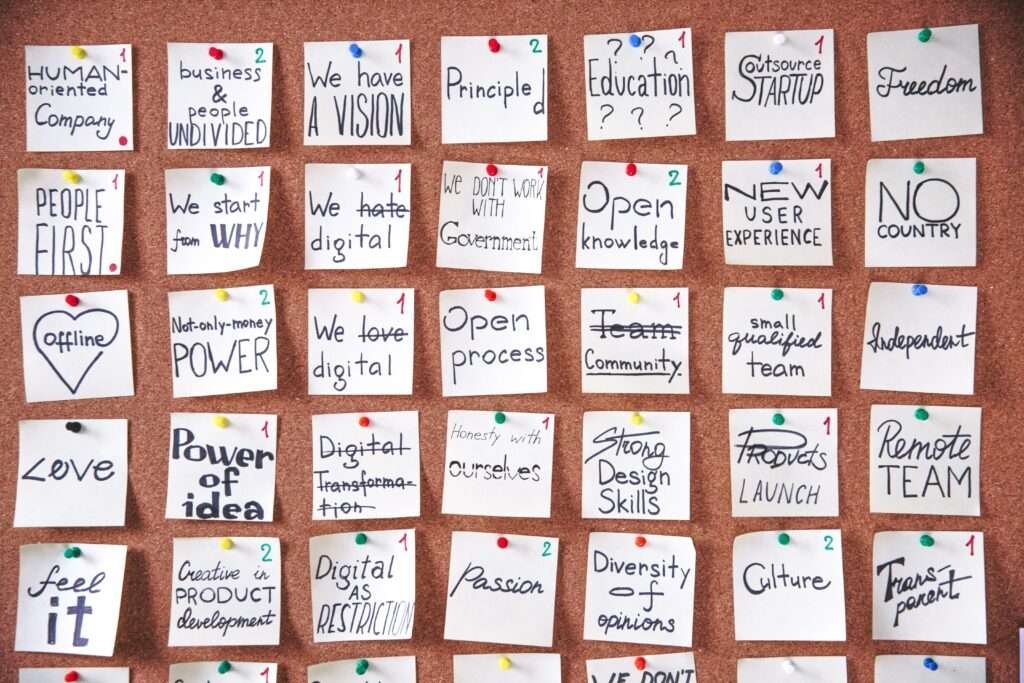


The definition of brainstorming is “the find of ideas by one or more persons in an effort to develop or identify a solution to a problem.
There are many applications for brainstorming. Most people identify brainstorming as developing ideas for new products or marketing campaigns, but it may also be used to develop ideas for activities like internal processes, organizational structures, and written content. Everything relies on the kind of firm and the strategy it uses for partnerships.
• Consider the perspectives and suggestions of others
It should go without saying that the greatest method to learn what people think about a certain product or service line, a company’s organizational structure, or even internal procedures is to get it directly for example by conducting surveys, getting reviews, and feedback, and having a suggestion box.
Your perspective as a business owner could be different from that of the individuals implementing a certain service or procedure. Be mindful that you may not be able to fully comprehend all of the day-to-day requirements if you are not active in management. To generate ideas and breakthroughs that are well-respected inside a company, brainstorming and gathering other people’s perspectives are helpful.
• Avoid making snap judgments on ideas
People are much more willing to express their thoughts and ideas in a relaxed and encouraging environment, so be sure to incorporate all ideas, write them down, and set aside time to evaluate them afterward. It’s important for people to feel comfortable sharing whatever thoughts they may have, so make sure your environment is welcoming and free from bias.
• Ideas as Stepping stones
Nobody enters a brainstorming session thinking about the most ideal, marketable, inexpensive, and beneficial good or service. It’s common for one person’s concept to inspire the inventiveness of another, so let your brainstormers build on one another’s ideas. It’s possible to effectively blend and incorporate a range of ideas and let the concept grow naturally as much as possible.
• Create a whole lot of Ideas
When brainstorming, quantity is always before quality. The likelihood of developing an idea or useful combination of ideas increases with the number of ideas generated. Stay away from critiquing, judging, or evaluating ideas. This fosters an atmosphere of openness where people are free from the inhibitions stated below. Embrace diversity and encourage all ideas, especially those that are strange or unconventional. Due to their distinctive viewpoints in related circumstances, varied participation frequently results in various ideas. Mixing concepts is empowering good ideas with other good ideas. Ideas can also sometimes be merged to produce even greater ones.
• Frame your ideas as goals
Your ideation will have a goal when you frame it, and it will be more focused. It also guarantees that everyone taking part in the brainstorming session is clear on what the objective is. You might focus your brainstorming on a certain market, item, issue, or requirement of the consumer. Framing will, in any event, give the context of your thoughts.
• Don't lose focus
Keeping your attention on the task at hand is important if you’re a member of a developing company with plenty of exciting potential. A lot of open doors may be quite harmful to effective brainstorming. Make sure that your conversations stay on topic if you’re hosting a brainstorming session for a specific issue, such as themes for an upcoming event. Avoid deviating into uncharted areas like product ideas for the next year. Limit the amount of misunderstanding.
• Choosing and finalizing your ideas
There must be some measure or assessment standard to pick the concept in order to condense a vast number of ideas into a manageable group. Most facilitators will guide the group through group voting, ranking, or some other method of allowing the participants to express their preference for any ideas. This can be done vocally or in writing, out loud or anonymously, and it can tackle one topic at a time or all of them simultaneously.





